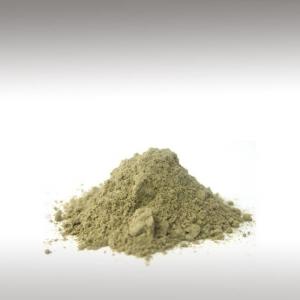
KELP POWDER (ASCOPHYLLUM NODOSUM) - INGREDIENTS

BASE / GENERAL DATA
Information submited: May 19, 2015 Modified: May 30, 2018 By: OperaDreamhouse
Kelps are large seaweeds belonging to the Brown Algae (Phaeophyceae) in the order Laminariales. Kelp grows in underwater "Forests" (kelp forests) in shallow oceans, and is thought to have appeared in the Miocene, 23 to 5 million years ago. The organisms require nutrient-rich water with temperatures between 6 and 14 °C. They are known for their high growth rate - the genera Macrocystis and Nereocystis can grow as fast as half a metre a day, ultimately reaching 30 to 80 metres.
Kelp, also known as Brown Algae, is an herb that comes from deep under the sea. It is, essentially, Seaweed that thrives on sunlight and takes in the host of nutrients and minerals present in the water around it.
Growth occurs at the base of the meristem, where the blades and stipe meet. Growth may be limited by grazing. The kelp life cycle involves a diploid sporophyte and haploid gametophyte stage. The haploid phase begins when the mature organism releases many spores, which then germinate to become maleor female gametophytes. Sexual reproduction then results in the beginning of the diploid sporophyte stage, which will develop into a mature individual.
Some of the earliest evidence for human use of marine resources, coming from Middle Stone Age sites in South Africa, includes the harvesting of foods such as abalones, limpets, and mussels associated with Kelp forest habitats.
Kelp, also known as Brown Algae, is an herb that comes from deep under the sea. It is, essentially, Seaweed that thrives on sunlight and takes in the host of nutrients and minerals present in the water around it.
Growth occurs at the base of the meristem, where the blades and stipe meet. Growth may be limited by grazing. The kelp life cycle involves a diploid sporophyte and haploid gametophyte stage. The haploid phase begins when the mature organism releases many spores, which then germinate to become maleor female gametophytes. Sexual reproduction then results in the beginning of the diploid sporophyte stage, which will develop into a mature individual.
Some of the earliest evidence for human use of marine resources, coming from Middle Stone Age sites in South Africa, includes the harvesting of foods such as abalones, limpets, and mussels associated with Kelp forest habitats.

SPIRITUAL PRACTISES DATA

MEDICINE / HEALTH DATA

BEAUTY / COSMETICS DATA

FOOD / COOKING DATA
COMMENTS
No comments.


